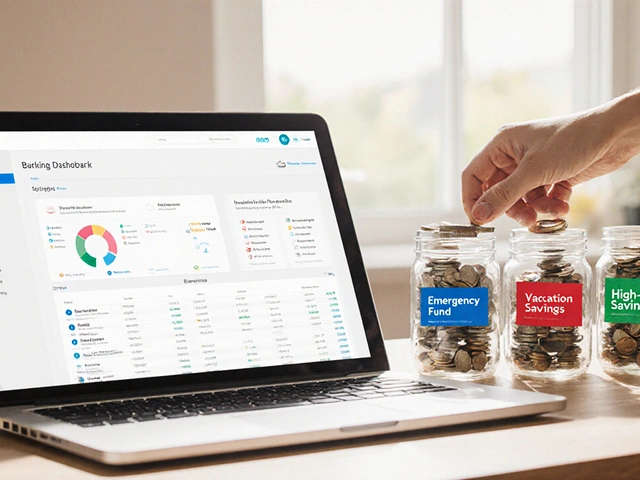
America’s tax system has plenty of mysterious corners, but the Earned Income Tax Credit – or EITC – hits families in the wallet in the best way possible. Imagine a tax break that isn’t just for the super wealthy or those buried in business expenses. Rather, it’s aimed at regular people busting their tails at jobs that don’t pay a ton. Every year, millions of Americans line up to see if they qualify, hoping for a much-needed boost. In 2023 alone, the IRS paid out $64 billion through the EITC to 31 million workers. That’s not pocket change. But there’s a twist: some folks think this credit is only for the poorest Americans. Is it really just for them? Or do more people qualify than you’d expect?
Understanding the Earned Income Tax Credit (EITC)
Let’s clear up what the EITC actually is before we go any further. In short: it’s a refundable tax credit, meaning if it’s bigger than the tax you owe, you get the difference as a refund. That alone separates it from most tax perks, which usually just reduce what you owe to zero. The EITC is targeted at low-to-moderate income folks, especially those with kids. It’s sometimes even called “America’s largest anti-poverty program,” and for a good reason. According to the Congressional Research Service, the EITC lifted about 5.6 million people out of poverty in 2022, including 3 million children.
So, where did this program come from? It started in 1975, born out of the idea that people who work – even if the work doesn’t pay much – should get a chance to move ahead. Lawmakers tweaked the EITC over the years, making it bigger for families with children, adding benefits, and raising the income limits. The main goal: reward work and ease poverty, not just hand out checks. Here’s the deal: for each dollar someone earns (up to a point), their tax credit goes up. But get a raise or take on more hours, and there’s a gradual phase-out – the more you earn, the less credit you get.
Eligibility rules can make your head spin. There are household income thresholds, “earned income” definitions, filing status details, and requirements based on the number of children. It changes every year to keep up with inflation and economic shifts. Here’s a sample table of EITC income limits and maximum credits for 2025:
| Children | Max Income (Single/Head of Household) | Max Credit |
|---|---|---|
| 0 | $18,100 | $630 |
| 1 | $44,100 | $4,140 |
| 2 | $49,500 | $6,890 |
| 3 or more | $53,600 | $7,430 |
Notice those max income numbers. They aren’t super low. For families with kids, you can earn a lot more than you might think and still get some EITC help. It’s a moving target that catches not just the very poor, but big swaths of working-class folks, single parents, and people juggling multiple jobs.
Is Earned Income Credit Really Just for Poor People?
Here’s where the myth comes in: people hear “low income” and picture only the most financially desperate families. But the real EITC umbrella is wide. You don’t have to live below the poverty line. If you’re a cashier, an Uber driver, a substitute teacher, or a retail worker bringing in $35,000 a year with two kids, you’re not what politicians call “poor” – but you might still qualify. Ever met a married couple with three children and a household income of $50,000? Even they might get some EITC.
Let’s go a little deeper: about two-thirds of EITC recipients in recent years were workers with kids. Single parents – especially mothers – are the biggest winners, since raising kids on your own almost always means balancing work and bills without much extra cash. Childless workers qualify too, just with much smaller credits and a lower income cap. According to an IRS report for 2025, the average EITC payout was around $2,020 – not chump change for a working family that needs to buy groceries, pay rent, or cover school supplies.
It’s also not a “free ride.” You can’t get the EITC unless you earn income from work. If you only collect Social Security, pensions, or unemployment, you’re out of luck. That’s a big deal: the credit essentially rewards effort. Only earned income from wages, salary, tips, or self-employment counts, and things like lottery winnings or investment profits do not qualify.
There’s a catch though: the EITC credit doesn’t stick around forever. If your income rises, or your kids get older and move out, your eligibility can disappear pretty quick. So, people cycle in and out of the program as their lives change. In fact, a University of California study showed that over a ten-year period, about 60% of American families with children tapped into the EITC for at least one year. That means it’s not just the chronically poor – it helps the newly divorced, the laid off, or folks sidelined by emergency medical bills.
"Each year, millions of Americans rely on the EITC to bridge the gap between their hard work and their family’s basic needs. It is a vital tool for building economic security from the ground up." — Center on Budget and Policy Priorities

How Do You Qualify for the EITC?
So, you’re wondering whether you’d make the cut this year? The IRS doesn’t exactly hand out golden tickets, but they do lay out the rules pretty clearly. First, you need to have earned income (wages, self-employment, or certain disability payments count). You also have to have a valid Social Security number, and—importantly—file a federal tax return, even if you’re usually exempt because your income is low.
Let’s untangle the specifics. There are a few main hurdles:
- Your income and investment income must be below certain limits (see table above).
- Your filing status can’t be “married filing separately.”
- You must be a U.S. citizen or a resident alien all year.
- If you’re claiming qualifying children, they must live with you for more than half the year, meet age requirements, and have valid Social Security numbers.
- For childless workers: you must be between 25 and 65 years old, live in the U.S. for more than half the year, and not be a dependent on someone else’s return.
Matching up to all these requirements isn’t always easy. Each year, the IRS estimates that about one in five eligible families miss out on the credit, mostly because they don’t know about it or think they don’t qualify. Another big reason: mistakes on returns, especially when kids live with different relatives, or households move around often.
The easiest way to check your eligibility? Use the IRS’s EITC Assistant tool online, or run your own numbers through popular tax software. And here’s a tip: if you missed claiming the EITC in past years, you can still file amended returns for up to three years back and get the money you’re owed. That’s free cash you shouldn’t leave sitting with the government.
Here’s something else most people don’t realize: claiming the EITC won’t mess up your eligibility for government benefits like SNAP or Medicaid. The IRS specifically says that EITC refunds aren’t counted as income for most federal aid programs. So, you don’t have to worry about losing your health insurance or food assistance if you get a big credit check.
The Impact of EITC on American Families
What does all this look like on the ground? Let’s be real: tax credits sound boring until you see how they’re spent. For a lot of families, that yearly refund is the biggest check they get all year. It’s used to catch up on utility bills, fix the family car, get ahead on rent, or buy new shoes for the kids. In fact, a 2022 survey from the Urban Institute found that 89% of EITC recipients used their refund to cover basic living expenses. Nearly half put some toward paying down debt. That’s power, not charity.
Researchers at Columbia University found that kids in EITC-recipient families are healthier, do better in school, and even earn more as adults compared to similar kids whose parents didn’t get the benefit. The EITC isn’t a magic fix, but give a family a little extra to work with and the results ripple out. Pregnant women who receive the EITC see lower rates of low-birthweight babies. More high school graduation rates tick up.
Want another interesting twist? The credit isn’t just for parents with young children. Grandparents raising grandkids, people caring for siblings, and foster parents often qualify. The EITC rules don’t always match the traditional “nuclear family” model. That means anyone with a qualifying child, even outside of the usual parent-child relationship, might get help. Here’s a quick tip: if you’re not sure who in a split household should claim the child for EITC, check the IRS tie-breaker rules.
Policy experts argue the EITC is a model for other antipoverty programs because it encourages employment, returns more in benefits than it costs in tax fraud or error, and doesn’t create the so-called "welfare trap." For every dollar spent on EITC, research shows it pays back in reduced government spending down the road, higher tax receipts, and healthier families. There’s a solid reason it’s one of the few antipoverty efforts to draw support from both major political parties.

Tips for Maximizing Your Earned Income Credit
If you want to squeeze every drop out of your earned income credit, you’ve got to play it smart. Here are some of the simplest, but most effective, strategies people use:
- Always file a tax return, even if you don’t owe anything. Free tax prep programs like VITA or AARP Tax-Aide can help, especially if you can’t afford an accountant.
- Double-check your return for mistakes, especially if your family situation has changed (new job, birth of a child, divorce, or kids moving in or out).
- If you’re self-employed (gig workers, freelancers, etc.), keep accurate records. The IRS is picky about documentation if they audit your EITC claim.
- Don’t leave unclaimed money sitting on the table: amend old returns from the previous three years if you missed the credit before.
- Use tax prep software or the IRS’s online tools to check eligibility and amounts. They’re updated every year and usually free to use.
- If you share custody, clarify who claims the credit each year—don’t both try for the same child, or you may owe the IRS back later on.
- Don’t get tricked by scams promising bigger credits for a fee. Only work with trustworthy tax preparers, and keep copies of anything you sign.
An extra tip? Plan ahead each year with the IRS’s EITC Estimator, so you aren’t surprised by a smaller-than-expected refund. Mark your calendar for January 31—by law, the IRS can't issue EITC refunds until mid-February, to keep fraud down.
The EITC isn’t flashy, but it is a workhorse for working Americans. Next time someone says it’s just for “poor people,” show them the real numbers. Whether you’re barely getting by or slowly climbing the economic ladder, this tax credit is designed to make work pay—while giving a boost right where it’s needed most. Talk about money well spent.







Write a comment